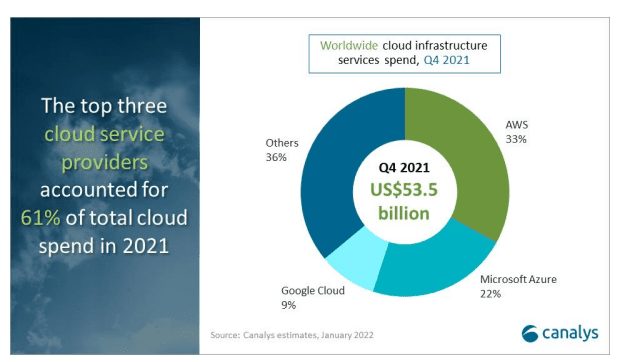[lwptoc float=”none”]
Difference between Cloud Server and Physical Server (On Premises)
There are so many difference between cloud server and physical server. There are clear benefits having the Cloud Server.
Having a Physical Server is a very expensive cost for any company to buy and maintain.
Both the initial upfront and running costs are very costly.

Tabluation of the Difference between Cloud Server and Physical Server (On Premises)
Cloud Server |
Physical Server (On Premises) |
|
Total Cost of Ownership |
|
You will need to buy hardware and software for
|
Running Overhead and related Supporting Costs |
|
|
High availability |
|
|
Future Proof |
|
|
Scalability |
|
|
Migration Costs |
|
|
Location Independent |
|
|

Top 3 cloud infrastructure service (IaaS) provider
You can get cloud server services from these top 3 cloud infrastructure service (IaaS) provider
|
AWS
|
Azure
|
Google Cloud
|
|
|
Company
|
Amazon
|
Microsoft
|
Google
|
|
Launch year
|
2006
|
2010
|
2008
|
|
Geographical Regions
|
25
|
54
|
21
|
|
Availability Zones
|
78
|
140 (countries)
|
61
|
|
Key offerings
|
Compute, storage, database, analytics, networking, machine learning, and AI, mobile, developer tools, IoT, security, enterprise applications, blockchain.
|
Compute, storage, mobile, data management, messaging, media services, CDN, machine learning and AI, developer tools, security, blockchain, functions, IoT.
|
Compute, storage, databases, networking, big data, cloud AI, management tools, Identity and security, IoT, API platform
|
|
Compliance Certificates
|
46
|
90
|
|
|
Annual Revenue
|
$33 billion
|
$35 billion
|
$8 billion
|
Canalys Year-onYear Growth of Worldwide Cloud Infrastructure Spend from 2018 to 2021 – Jan 2022
Worldwide cloud infrastructure services expenditure topped US$50 billion in a quarter for the first time in Q4 2021. Total spending grew 34% to US$53.5 billion, up US$13.6 billion on the same period a year ago. Industry-specific applications continued to diversify the use of cloud infrastructure services, especially in healthcare and the public sector. This combined with more workload migration and cloud-native application development as part of digital transformation projects, which increased demand for services. In addition, lasting pandemic-related consumption drivers, such as remote working and learning, ecommerce, gaming and content streaming, remained important contributors. New immersive use cases are emerging, such as the metaverse, which will drive future demand and the need for more powerful, distributed, intelligent and scalable services with lower latency. The leading cloud service providers are best placed to provide the infrastructure. The top three in Q4 2021, namely AWS, Microsoft Azure and Google Cloud, collectively grew 45%, to account for a combined 64% share of customer spend.
For full-year 2021, total cloud infrastructure services spending grew 35% to US$191.7 billion, up from US$142.0 billion in 2020. The reopening of economies post-lockdowns and growing customer confidence during the year increased multi-year contract commitments with cloud service providers.
Canalys Top 3 Cloud Service Providers Q4 2021 – AWS, Azure and Google Cloud – Jan 2022
Amazon Web Services (AWS) led the cloud infrastructure services market in Q4 2021, accounting for 33% of total spend. It grew 40% on an annual basis. Meta, previously Facebook, recently chose AWS as a long-term strategic cloud service provider and continues to deepen the relationship as Meta begins to move away from social media to become a broader metaverse company over the next five years. AWS also announced key customer wins across retail, healthcare and financial services and emphasized a key agreement with Nasdaq to migrate markets to AWS to become a cloud-based exchange.
Microsoft Azure had a 22% market share and was the second largest provider. It grew 46%, driven by long-term consumption commitments. Across its metaverse technology stack, Microsoft Azure has prepared Digital Twins to model physical objects, Azure IoT to connect physical assets to the cloud and Azure Maps, an indoor private mapping service. It continued to grow its cloud business across multiple sectors in Q4 2021, with key wins in healthcare and financial services
Google Cloud was the third largest provider and grew 63% to account for 9% of the market. The Google for Startups Cloud Program recently expanded support for investor-backed startups and won key customers, including some in the virtual reality space. It also continued global expansion plans with a dedicated US$1 billion five-year investment across Africa to support digital transformation efforts



